It is distressing to think that such a large deformity can appear in an otherwise healthy child, and that we still have no idea where it comes from.
JIP James, surgeon
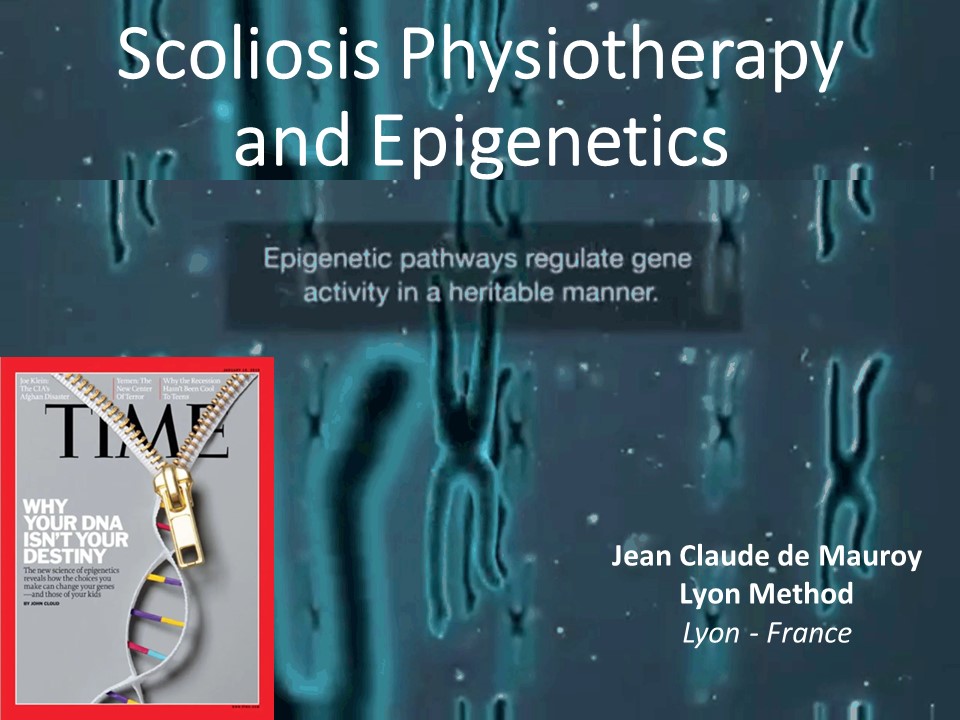 |
Great hopes had been based on genetics. The genome study was supposed to allow us to associate diseases with abnormalities. The discovery of these anomalies should make it possible to anticipate diseases and treat diseases at the source. But in 2010, the Time magazine title: Why Your DNA Isn’t Your Destiny! The new field of epigenetics is showing how environment and choices can influence our genetic code and that of our kids. |
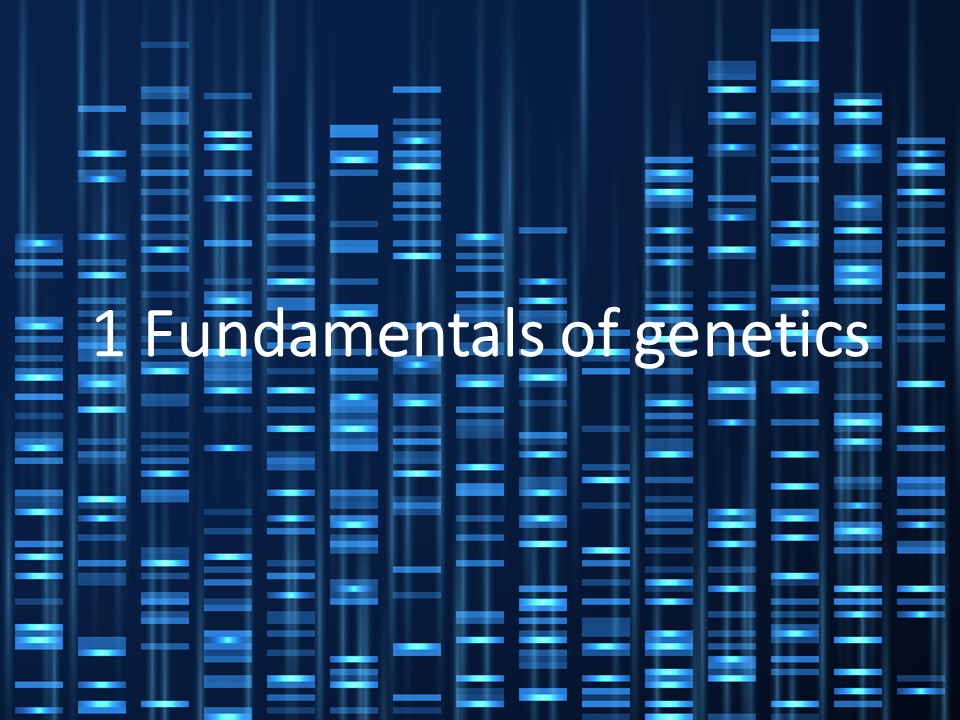 |
The foundations of genetics will be brought up in the first chapter. |
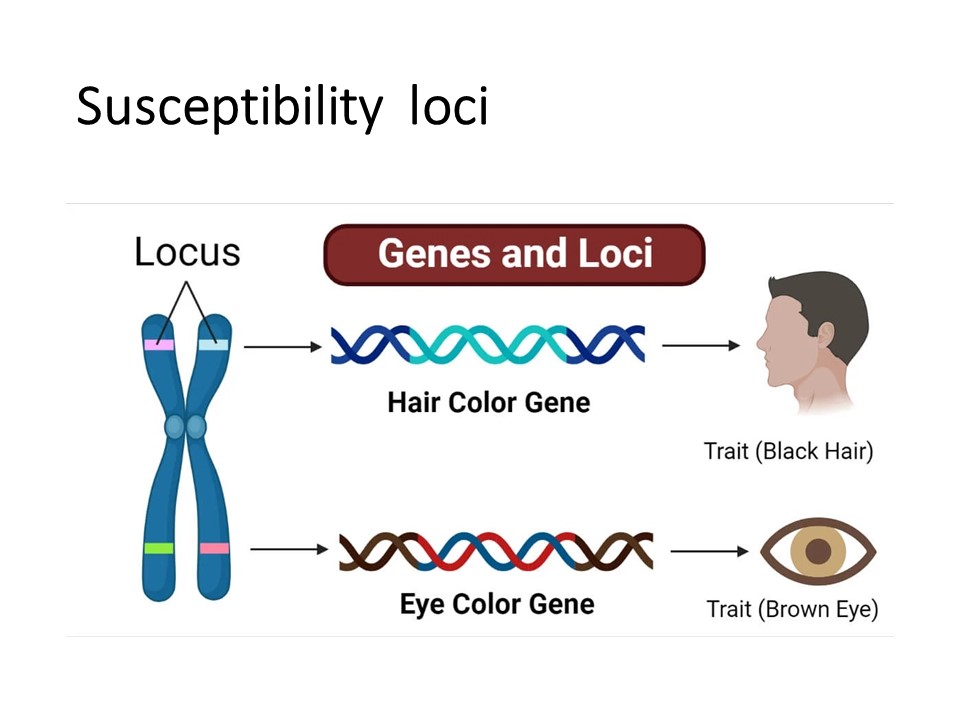 |
A locus corresponds to a small part of the chromosome that will determine for example the color of the hair or eyes. With a length of two meters, the strands of DNA are very collected, like a ball of wool, in the cell. |
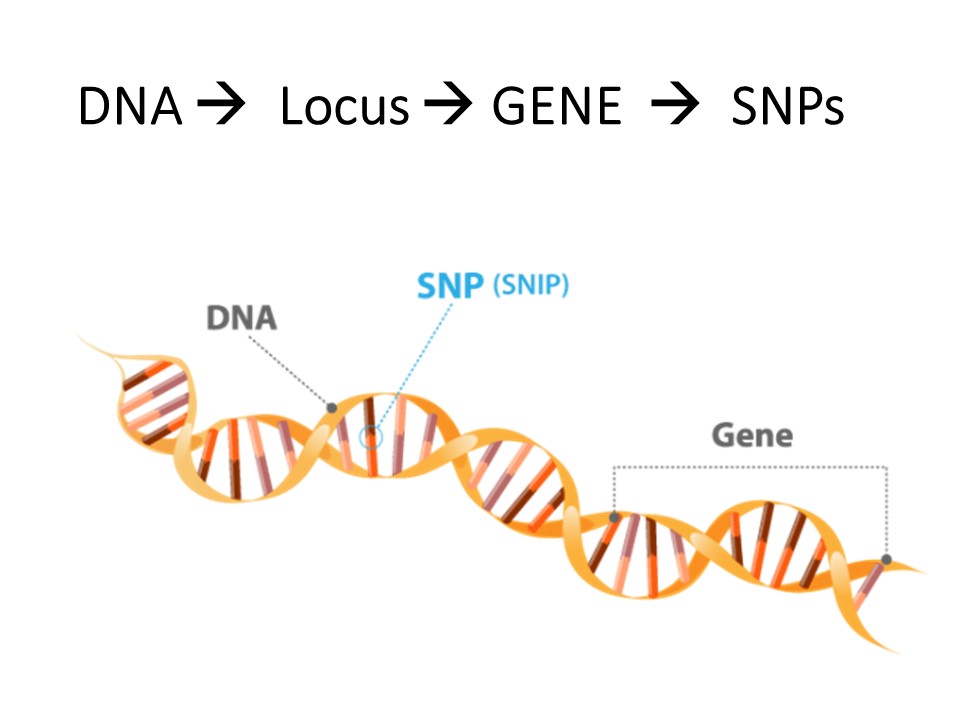 |
A single nucleotide polymorphism is a genomic variant at a single base position in the DNA |
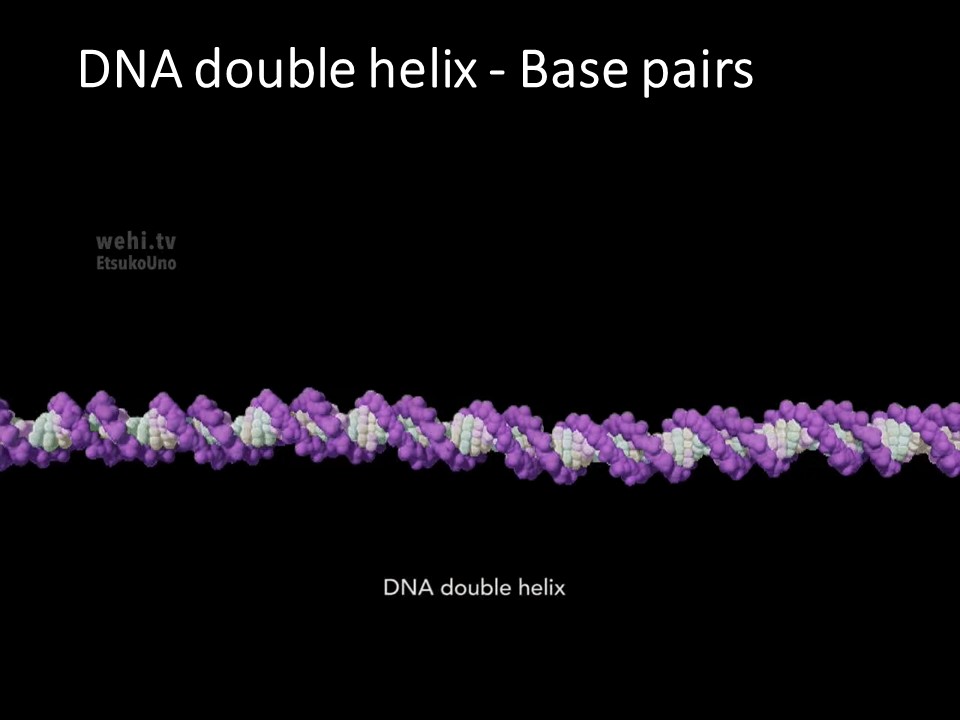 |
A DNA molecule is made up of two linked strands that wind around each other to resemble a twisted ladder in a helix-like shape. Each strand has a backbone made of alternating sugar (deoxyribose) and phosphate groups. Attached to each sugar is one of four bases: adenine , cytosine, guanine or thymine. The two strands are held together by hydrogen bonds between pairs of bases. Genetic code refers to the instructions contained in a gene that tell a cell how to make a specific protein. Each gene's code uses the four nucleotide bases.
|
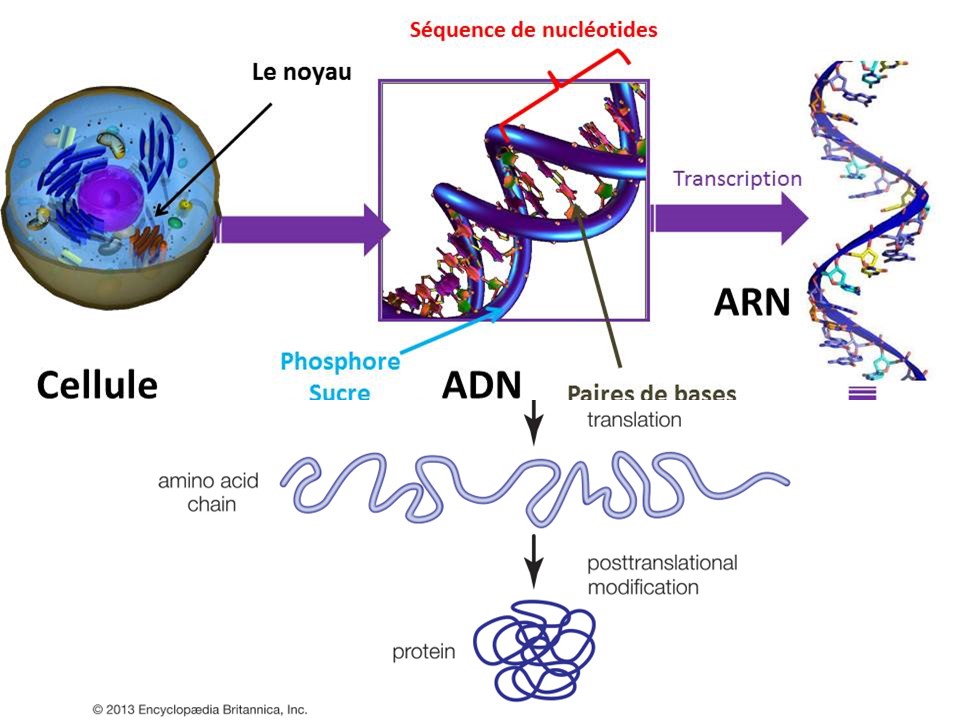 |
Since proteins are made in the cytoplasm, the first step in gene expression is the synthesis of a messenger that will transport genetic information to the places of protein synthesis. This step is the transcription that allows the synthesis of mRNAs or messenger RNAs. |
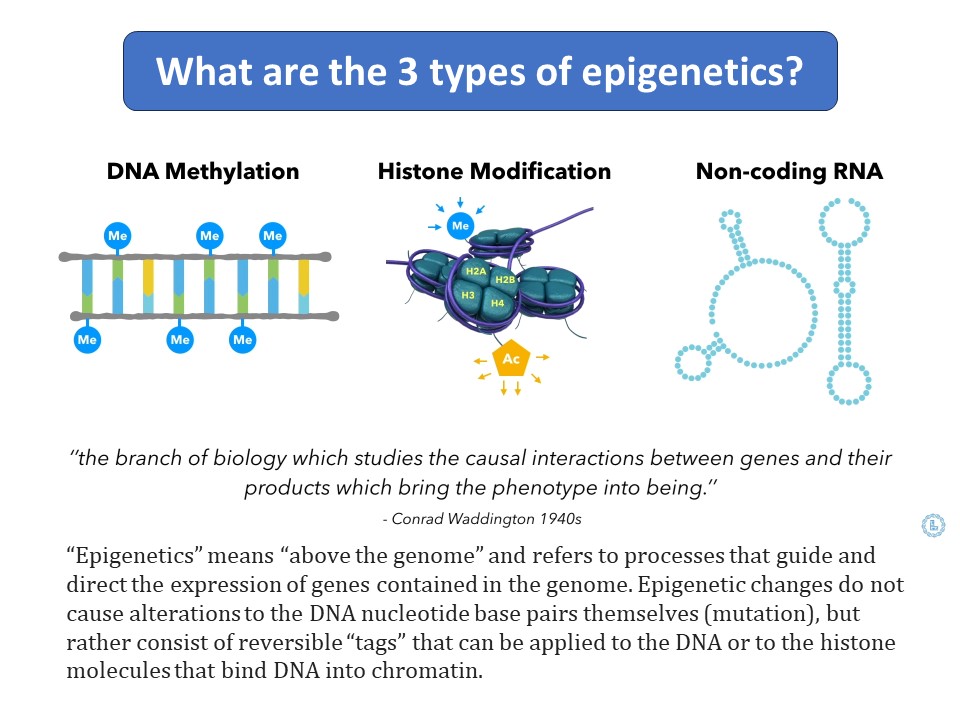 |
“Epigenetics” means “above the genome” and refers to processes that guide and direct the expression of genes contained in the genome. Epigenetic changes do not cause alterations to the DNA nucleotide base pairs themselves (mutation), but rather consist of reversible “tags” that can be applied to the DNA or to the histone molecules that bind DNA into chromatin. Micro RNAs (Mir-221) that play a role in the fibrous ring of the intervertebral disc have abnormal expression in scoliosis. Similarly, some abnormal microRNAs found in mesenchymal stem cells of scoliosis spinal cord play a role in the growth of the vertebral body. Long uncoded RNAs are more prevalent in scoliosis. Some play a role in osteogenic differentiation. |
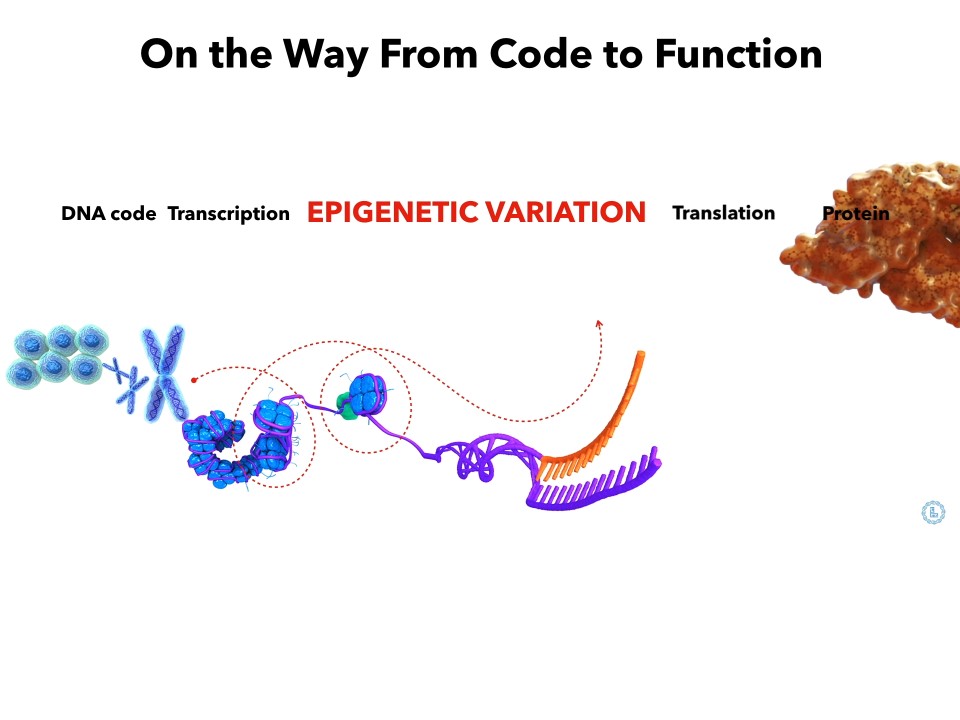 |
For a given genotype, the epigenetic variation could be environmentally induced or occur randomly. Strategies developed by organisms to face environmental fluctuations such as phenotypic plasticity and diversified bet‐hedging rely, respectively, on these different sources. |
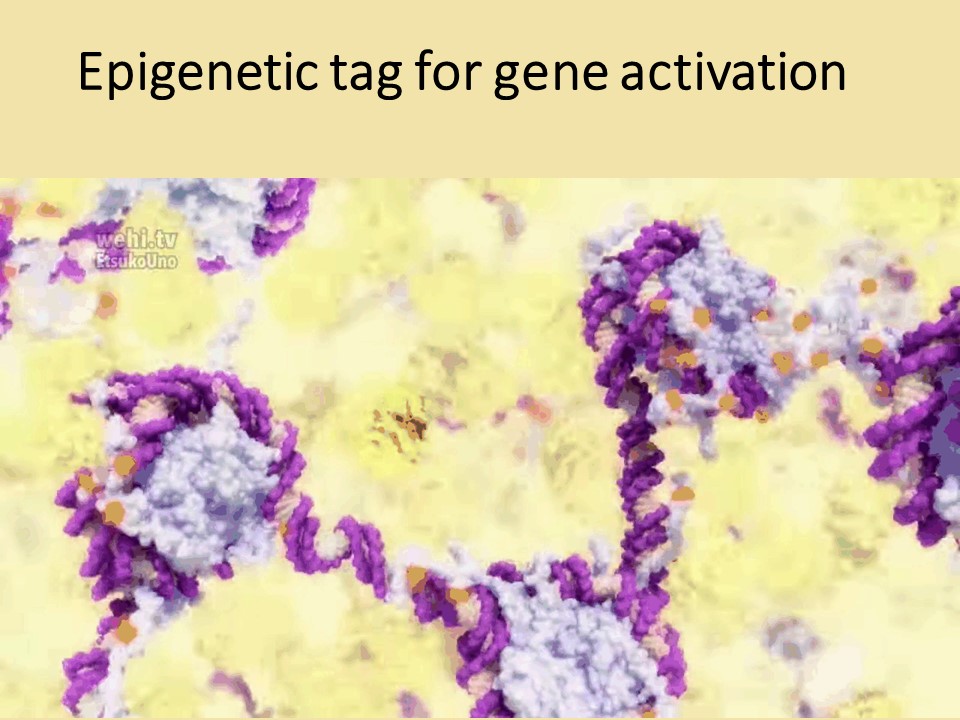 |
Epigenetic tags record the cell's experiences on the DNA, helping to stabilize gene expression. Epigenetic tags regulate gene expression by acting as gatekeepers, blocking or allowing access to a gene's 'on' switch. Demethylation unfolds chromatin and makes it accessible
|
 |
The demethylated region becomes available for transcription into messenger RNA. Transcription is a highly regulated process, enabling cells to activate genes in response to external stimuli. |
 |
The gene regulatory proteins allow the individual genes of an organism to be turned off specifically. Different selections of gene regulatory proteins are present in different cell types and thereby direct the patterns of gene expression that give each cell type its unique characteristics. Typically, methylation turns genes “off”. This is the addition of a chemical group, a 'methyl group', to one of the bases (the 'C' for Cytosine) of DNA. This methylation decreases the expression of the affected genes. Too embobined, these genes cannot be transcribed. They remain silent. |
 |
DNA is active when chromatin is unfolded and inactive when it is folded back on itself. |
 |
Chromatin is formed by DNA wrapped around a core of proteins called histones. It is organized according to different levels of compaction. Its replication implies that it is reorganized into chromosomes at the moment of cell division. This division not only transmits genetic traits, but also so-called epigenetic traits associated with chromatin modifications. Today, the most common definition of epigenetics is "the study of heritable changes in gene function, occurring without alteration of the DNA sequence". RNA transcription ceases when chromatin is repressed.
|
 |
The relationship between scoliosis and epigenetics will be brought up in the second chapter. |
 |
In clinical practice, it must be recognized that knowledge of the genetics of scoliosis has had little impact on the prediction of evolutivity which alone allows a selection of scoliosis to be treated precoceously. This failure of genetics on the progression of curvature has caused in recent years a paradigm shift with a new orientation towards epigenetics. |
 |
The initial results of this paradigm shift are positive.. Fifteen genes were reported as having SNPs with significant association with progressive AIS, but none showed sufficient power to sustain clinical applications. In contrast, nine studies reporting epigenetic modifications showed promising results in terms of reliable markers. |
 |
We know about a hundred genetic diseases associated with scoliosis. They affect all chromosomes. Idiopathic scoliosis is therefore not linked to an isolated chromosomal abnormality.
|
 |
In practice, if the genes associated with scoliosis allow a better understanding of its causes, their multiplication makes their practical use impossible. |
 |
It could be specified that some genetic mutations are more related to the severity of curvature with significant Cobb angles, but their presence is not a prognostic factor. |
 |
However, some genes are correlated with the progression of curvature. They concern muscle, nerve and inflammation. But as before, their presence is not a predictive criterion. |
 |
In addition to muscle and nerve, many genes associate scoliosis with cartilage and extracellular matrix. They only confirm that the progression of scoliosis is partly related to growth, which we already knew.
|
 |
Strong evidence suggests that scoliosis runs in families, but no direct evidence has been found. Also, nearly a third of patients with adolescent idiopathic scoliosis have a family history of the condition. With scoliosis, there's no clear evidence that parents can pass it onto their children. Unlike true hereditary diseases, there can be a wide variation in the types and severity of scoliosis that develop from generation to generation — if it even develops at all! |
 |
Even the more detailed study of SNIPs confirms their association with scoliosis but does not allow to determine an evolutionary risk. |
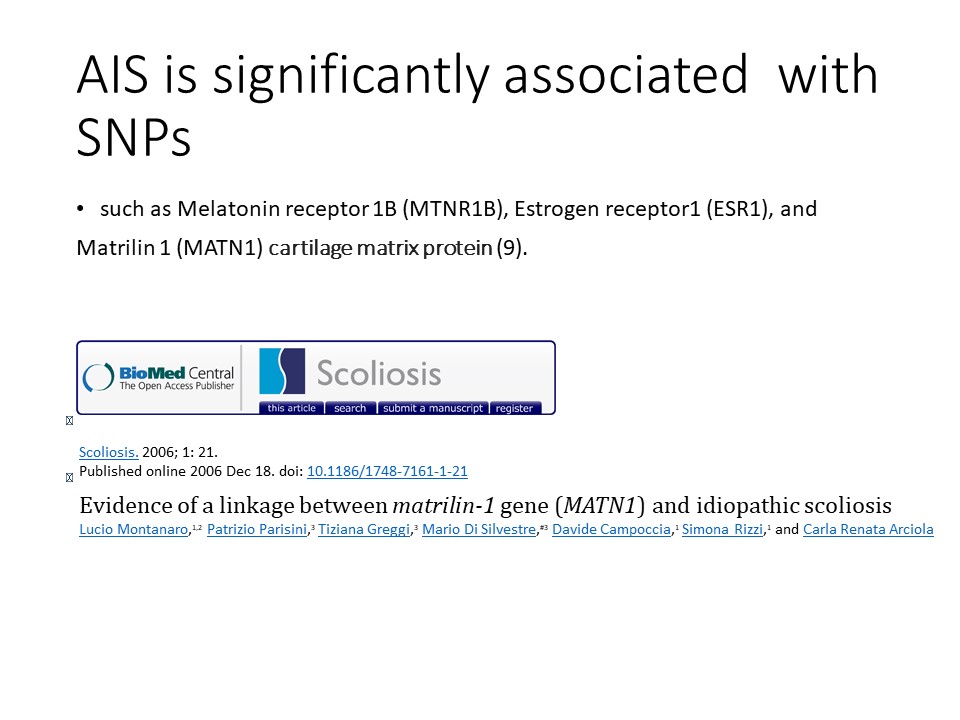 |
In addition to alterations in the anatomical structure of the skeleton, the study of SNIPs revealed hormonal disturbances in melatonin and estrogen. |
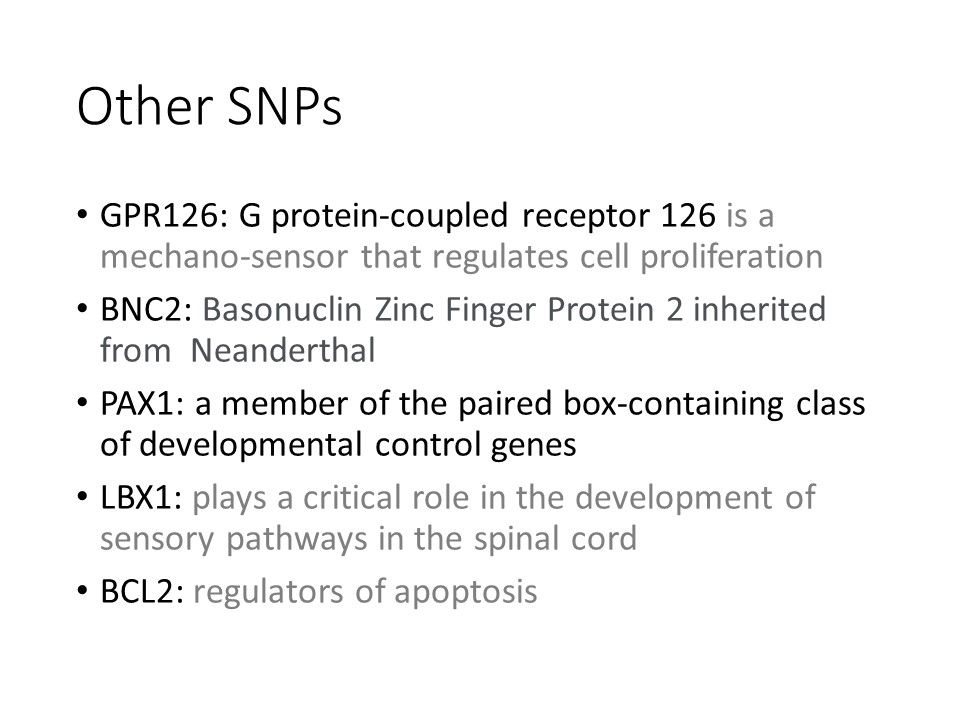 |
Extrapyramidal proprioceptive systems and mecano sensors are also affected.
|
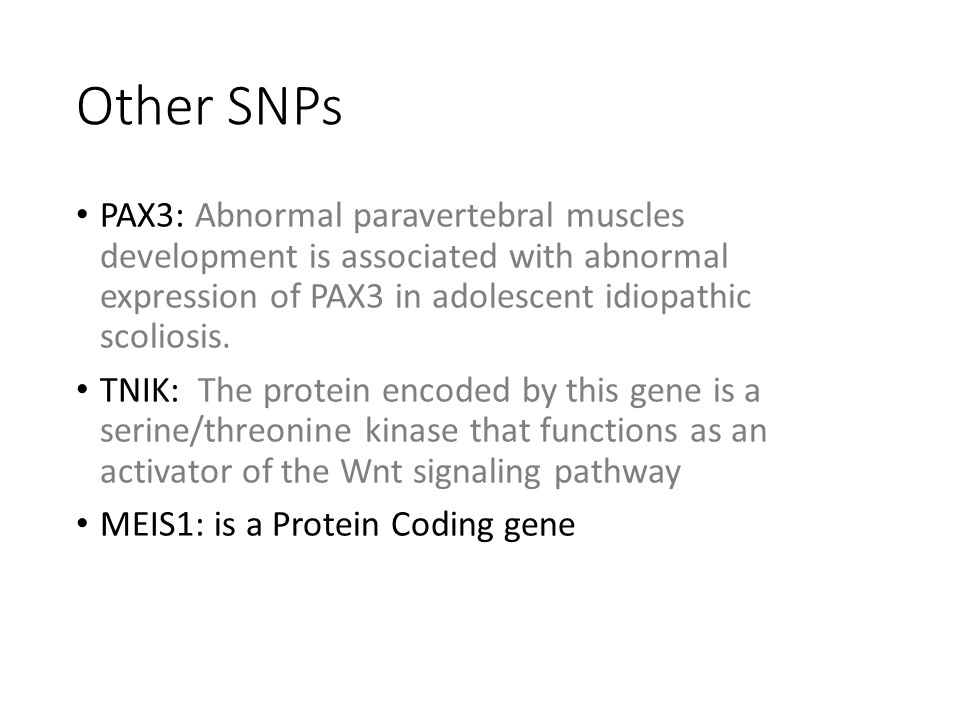 |
In addition to neurological control, paravertebral musculature can be affected. It is therefore the whole of the postural chain that is concerned by scoliosis. The strength of the chain being that of the weakest link, it is easy to understand the difficulty of predicting the failure of the chain. |
 |
The paradigm shift is very clear in the latest publications with an orientation towards epigenetic biomarkers and the use of artificial intelligence technologies. The rate of histone H4, which is a central component of the nucleosome, is decreased in intervertebral discs from scoliotic patients. |
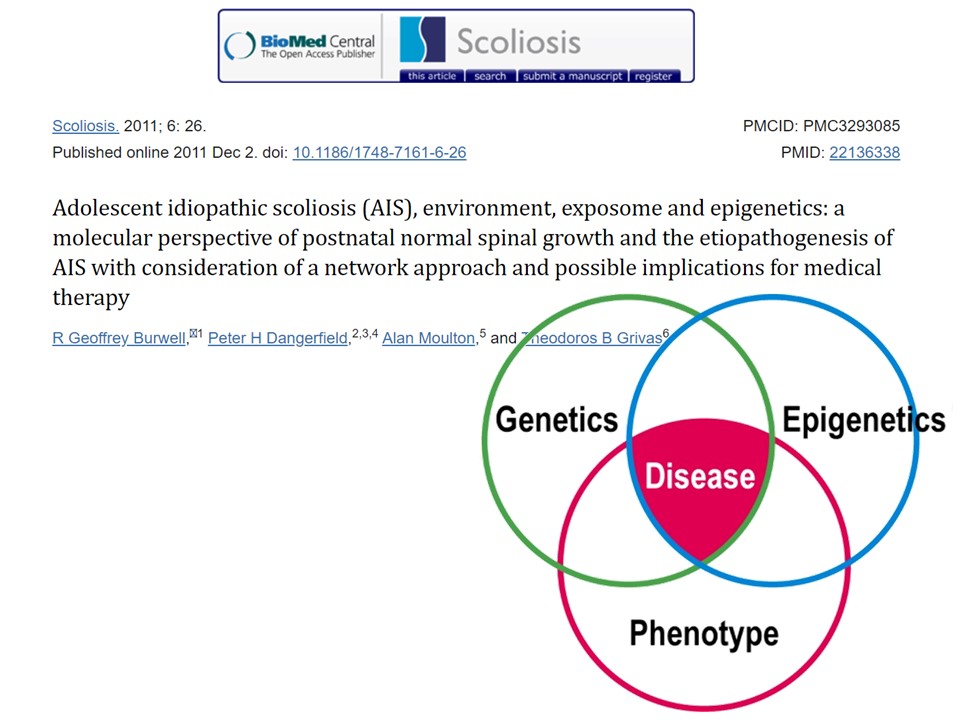 |
Burwell's 2011 publication opened the pathway for scoliosis by placing the phenotypic expression of scoliosis at the boundary between genetics and epigenetics. |
 |
The relationship between scoliosis and epigenetics will be brought up in the second chapter.
|
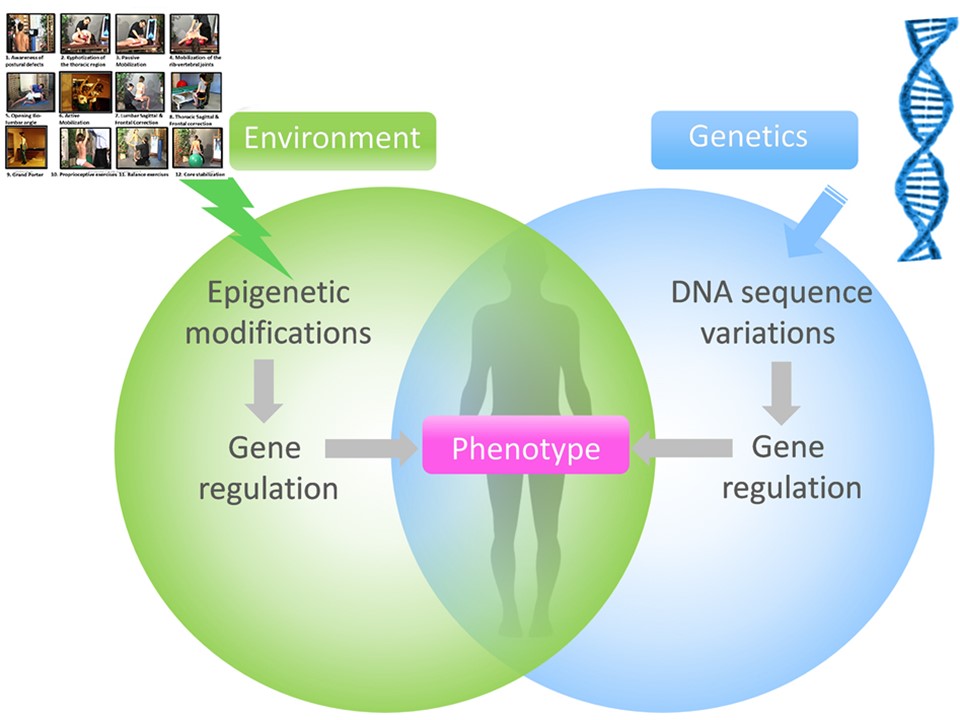 |
Epigenetics of physical exercise is the study of epigenetic modifications to the cell genome resulting from physical exercise. Environmental factors, including physical exercise, have been shown to have a beneficial influence on epigenetic modifications. |
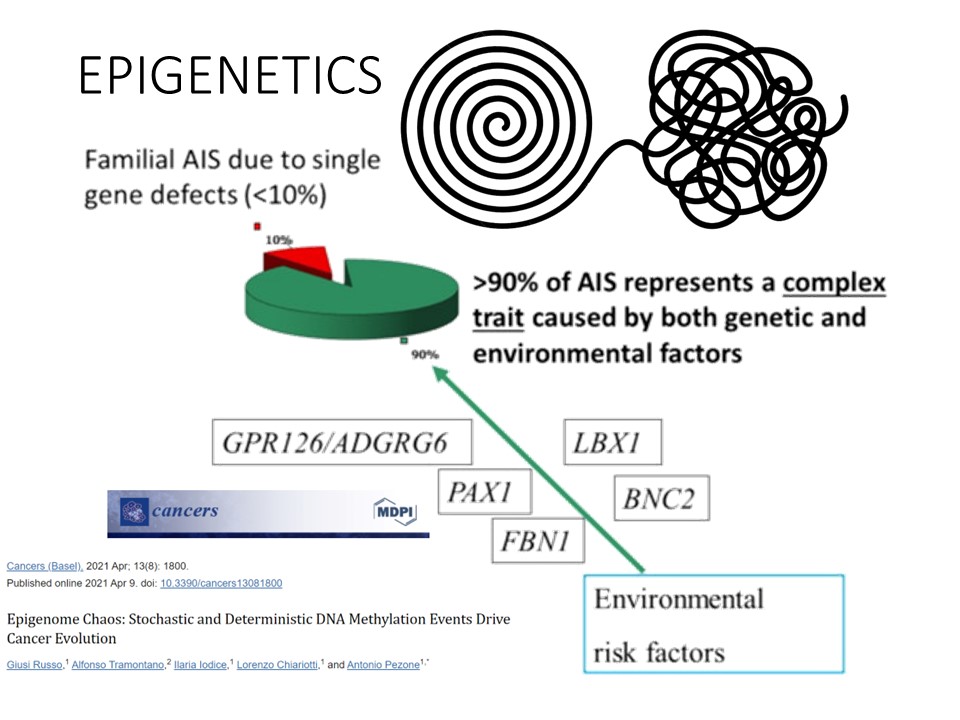 |
According to publications, for scoliosis, epigenetics represents between 80 and 90% of the evolutionary risk . One of the major epigenetic processes, DNA methylation is a chaotic process that we know well in scoliosis. |
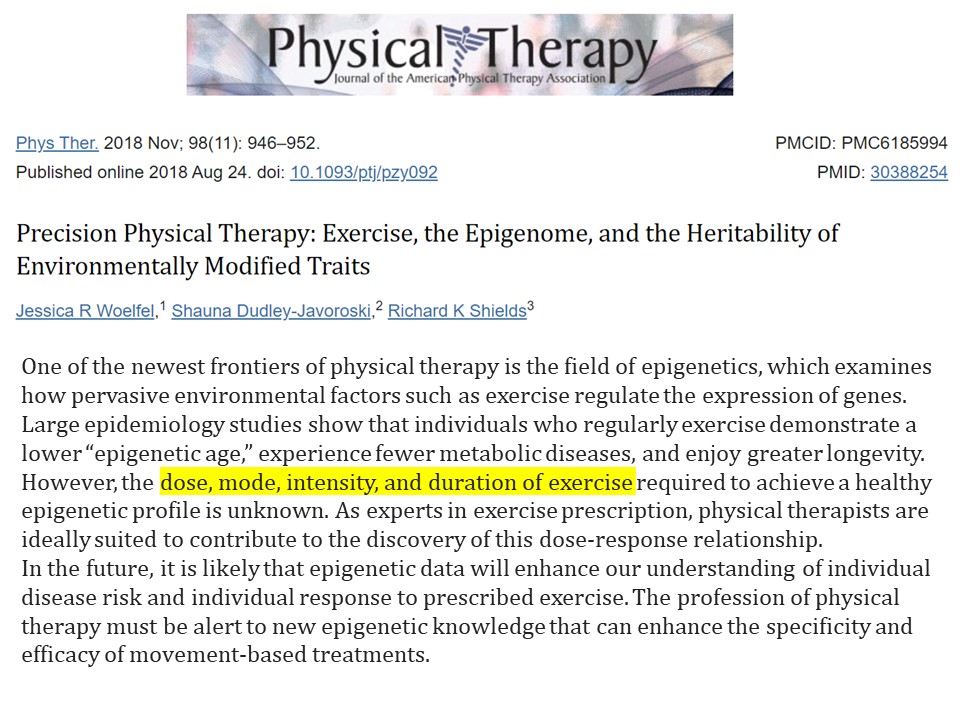 |
One of the newest frontiers of physical therapy is the field of epigenetics, which examines how pervasive environmental factors such as exercise regulate the expression of genes. Large epidemiology studies show that individuals who regularly exercise demonstrate a lower “epigenetic age,” experience fewer metabolic diseases, and enjoy greater longevity. However, the dose, mode, intensity, and duration of exercise required to achieve a healthy epigenetic profile is unknown. As experts in exercise prescription, physical therapists are ideally suited to contribute to the discovery of this dose-response relationship. In the future, it is likely that epigenetic data will enhance our understanding of individual disease risk and individual response to prescribed exercise. The profession of physical therapy must be alert to new epigenetic knowledge that can enhance the specificity and efficacy of movement-based treatments. |
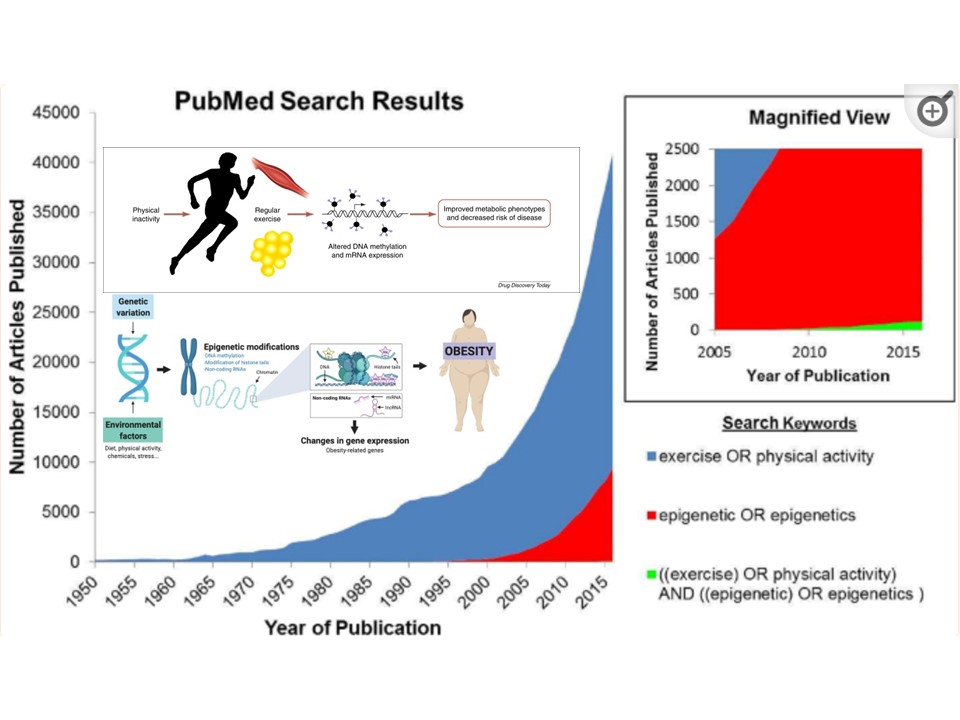 |
The pace of publications on physical exercise and epigenetics has evolved in an exponetial way in recent years.
|
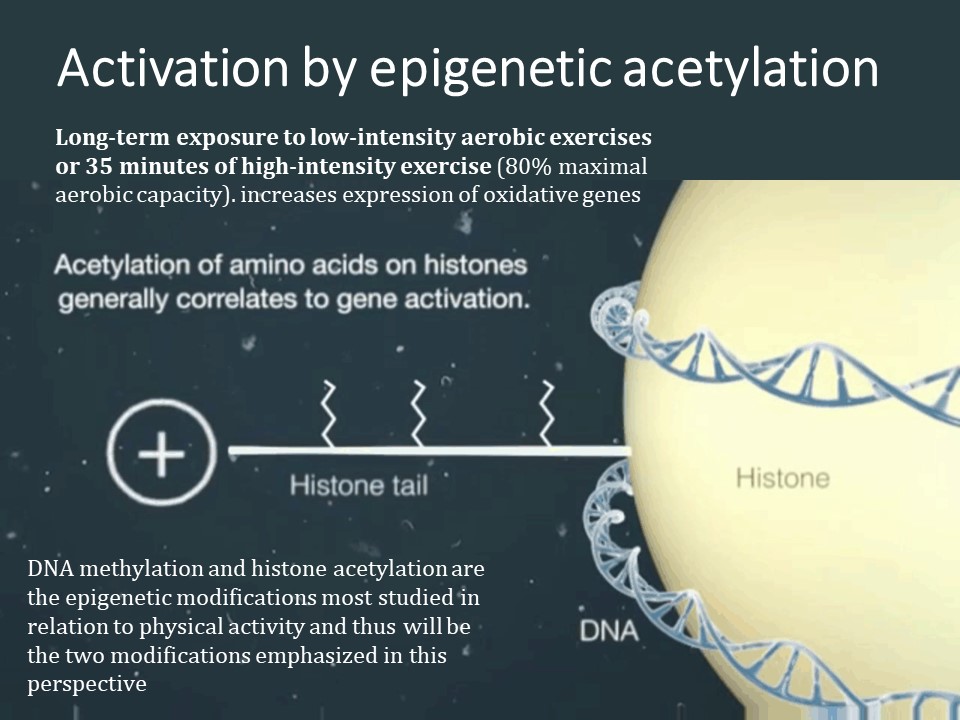 |
DNA methylation and histone acetylation are the epigenetic modifications most studied in relation to physical activity and thus will be the two modifications emphasized in this perspective. Activation is performed by epigenetic acetylation. Long-term exposure to low-intensity aerobic exercises or 35 minutes of high-intensity exercise (80% maximal aerobic capacity). increases expression of oxidative genes. The extrapyramidal system of muscle fibers type I works in aerobic metabolism which is the basis of the Lyon method. The intense exercises performed with the physiotherapist complement the daily repetitions at home of lower intensity. |
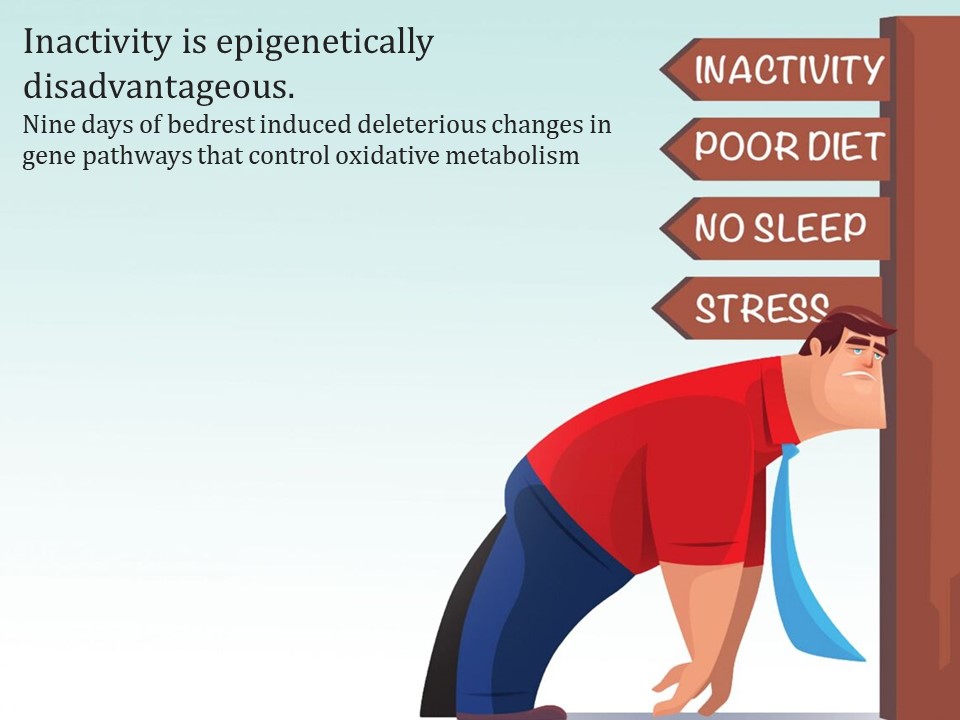 |
On the contrary, inactivity is epigenetically disadvantageous. Nine days of bedrest induced deleterious changes in gene pathways that control oxidative metabolism. Alongside physical activity, other epigenetic elements such as nutrition, sleep, stress are involved. This epigenetic context is called "the 24 hours of the back" in the Lyon method. |
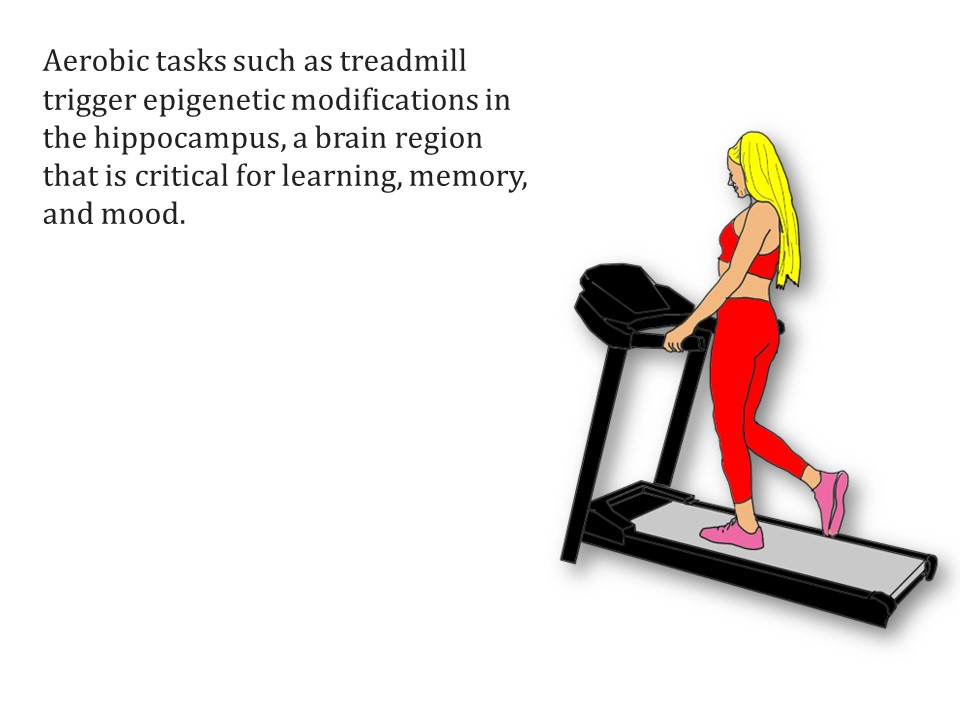 |
If one of the uses of the treadmill is to promote bone mass, the epigenetic action is not to be neglected. Aerobic tasks such as treadmill trigger epigenetic modifications in the hippocampus, a brain region that is critical for learning, memory, and mood. |
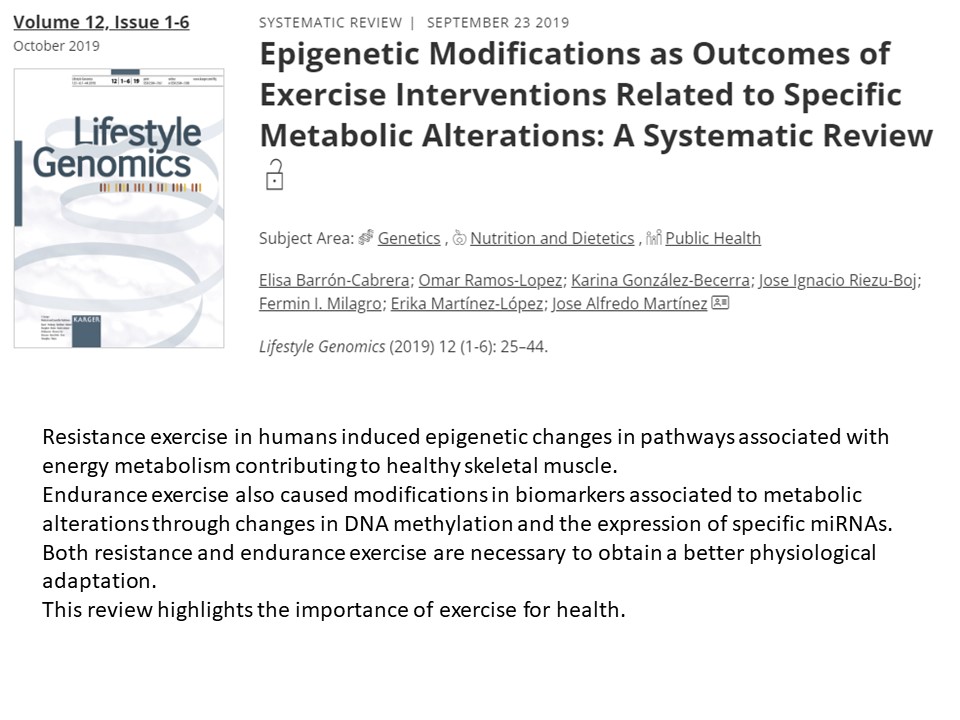 |
This review highlights the importance of exercise for health. Resistance exercise in humans induced epigenetic changes in pathways associated with energy metabolism contributing to healthy skeletal muscle. Endurance exercise also caused modifications in biomarkers associated to metabolic alterations through changes in DNA methylation and the expression of specific miRNAs. Both resistance and endurance exercise are necessary to obtain a better physiological adaptation. The use of small sandbags in exercise 9 of the “grand porter” of the Lyon method demonstrates the dosage of endurance and resistance.
|
 |
Exercise and physical activity induces physiological responses in organisms, and adaptations in skeletal muscle, which is beneficial for maintaining health and preventing and/or treating most chronic diseases. The impact of exercise on epigenetic modifications seems to depend on the type, intensity, and duration of exercise. In this context, resistance and endurance exercise differ in the transcriptional regulation in skeletal muscle. It is the experience of 200 years of scoliosis physiotherapy that defined the type, intensity and duration of exercises in the Lyon method. |
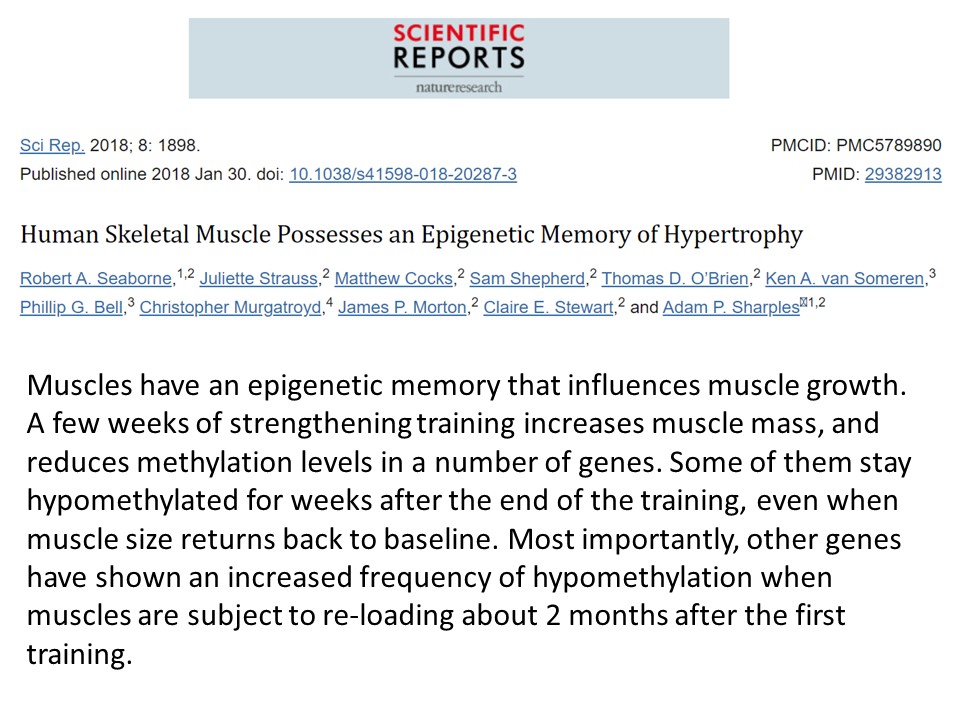 |
The muscle retains an epigenetic memory of muscle exercise for several weeks after exercise and like vaccination, repetitions of exercises accentuate the epigenetic effects. Intensive physiotherapy sessions are therefore quite legitimate in the treatment of scoliosis. Intensive physiotherapy in the Centre, for example during the realization of the brace, will be maintained by a weekly session at the local physiotherapist. |
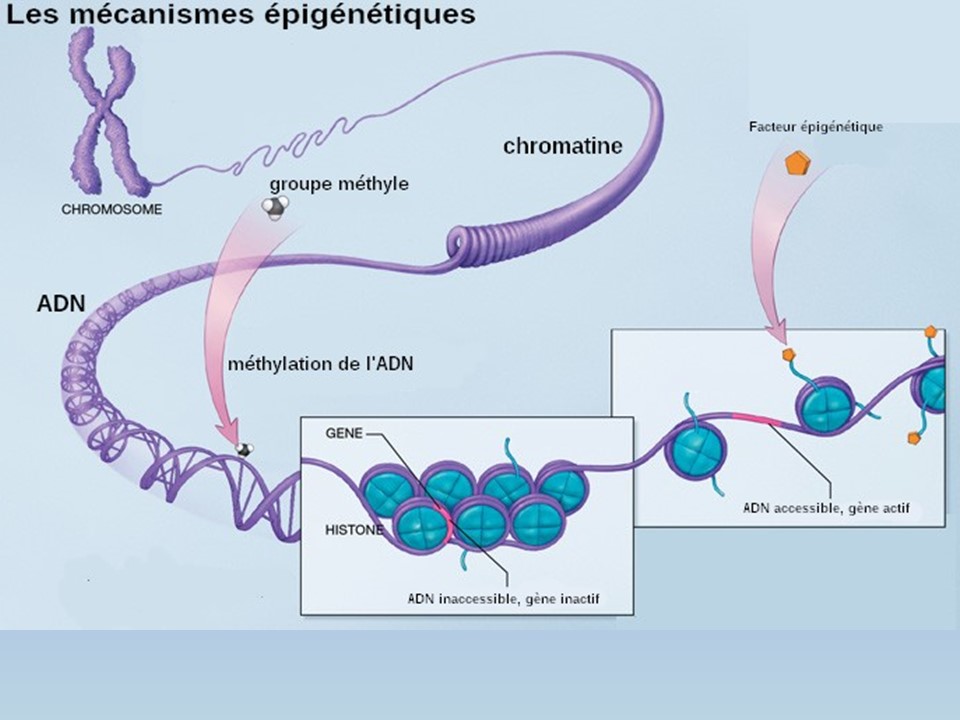 |
Among the beneficial effects of regular exercise is maintenance of muscle mass through enhanced proteostasis of structural proteins such as actin and myosin4. In addition, exercise activates several signaling cascades that ultimately initiate transcriptional regulation of genes encoding proteins involved in mitochondrial function and other pathways associated with energy metabolism. Epigenetic modifications are known to constitute an important regulatory layer of transcription and DNA methylation is a major epigenetic modification that governs chromatid structure and gene expression. Methylation of promoter regions is associated with repression of transcription, and DNA methylation will therefore typically cause gene silencing. |
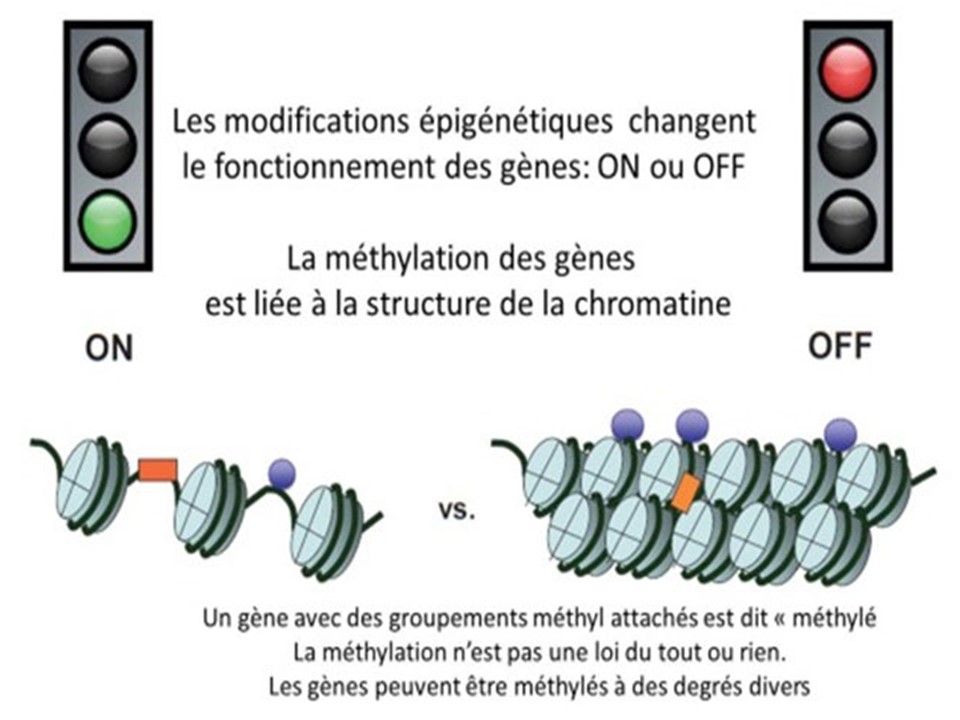 |
Hence, physical activity has been found to induce changes in DNA methylation patterns as well as expression of corresponding genes in skeletal muscle, both in response to a single exercise bout and after prolonged exercise training. Methylation does not work on the law of all or nothing. Genes can be methylated to varying degrees.
|
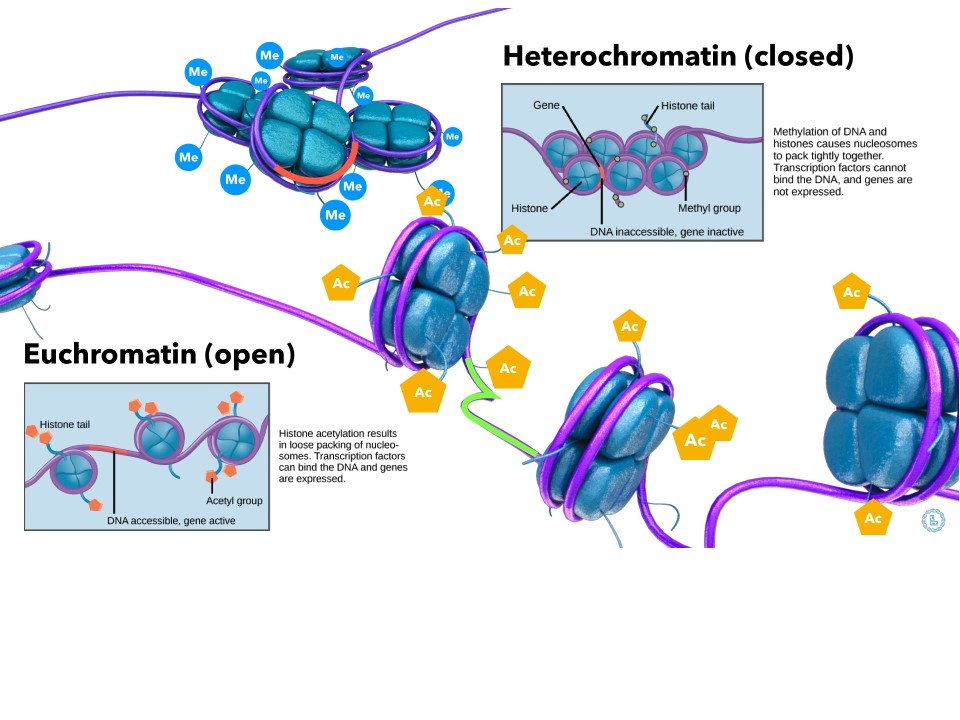 |
Histone acetylation results in loose packing of nucleosomees. Transcription factors can bind the DNA and genes are expressed. Some exercises promote mitochondrial muscle acetylation. they regulate exercise-responsive histone acetyl-sites. There is an epigenetic plasticity in the skeletal muscle. |
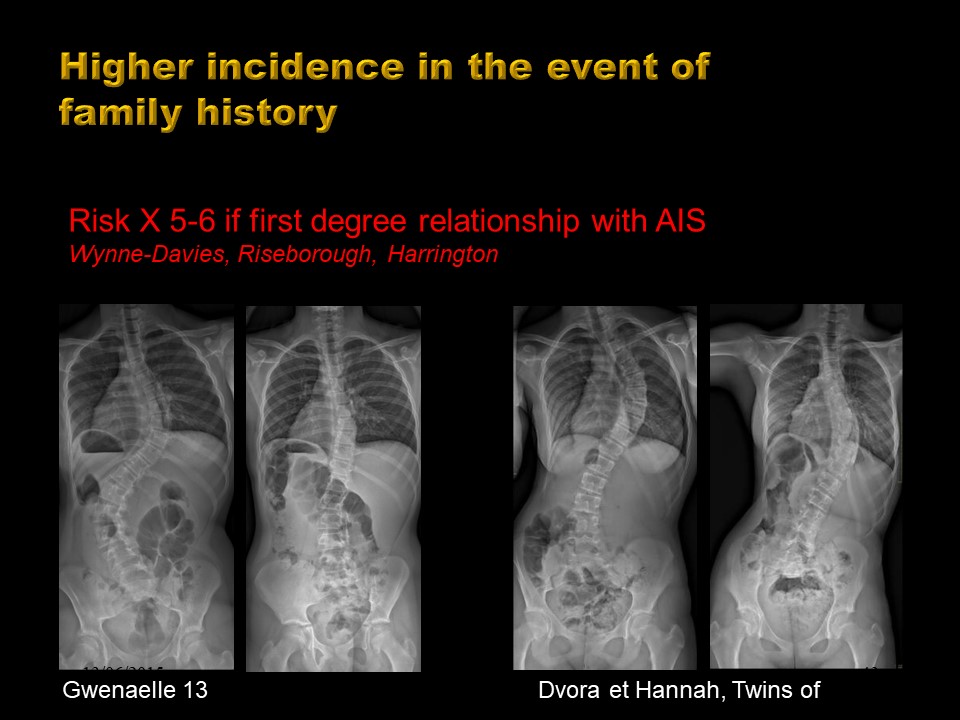 |
If the existence of scoliosis reaches 90% in monozygotic twins, often the deviation is not identical, although in addition to DNA, the environment is most of the time identical. |
 |
These two monozygotic twin children who have the same environment, certainly both have the same brace, but they do not have the same scoliosis. |
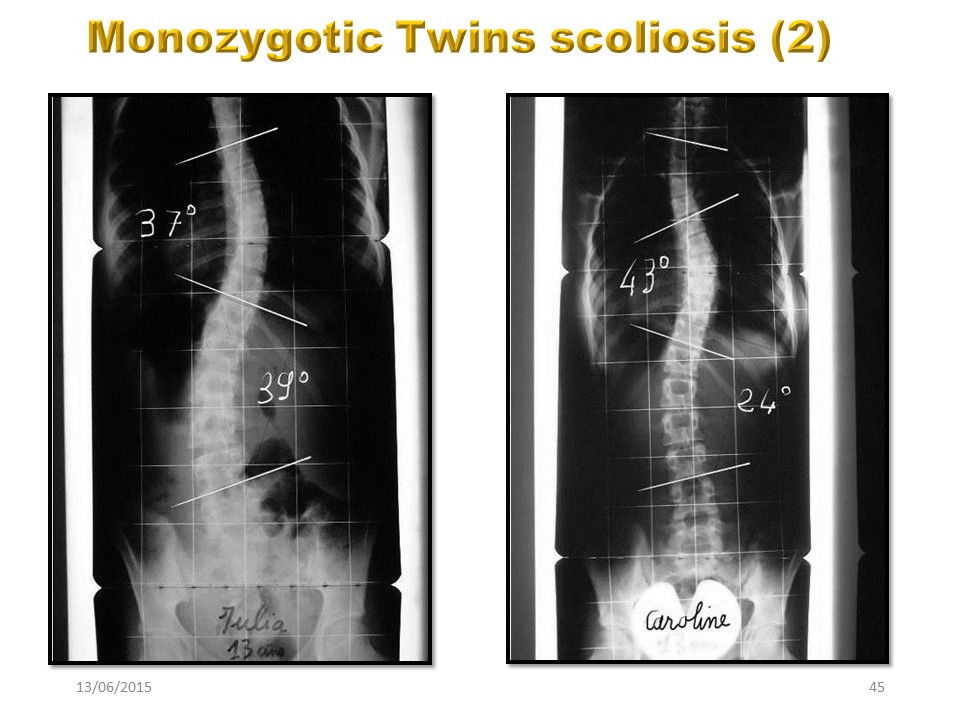 |
Julia has a double major scoliosis, while Caroline has a right thoracic curvature predominant with low lumbar rotation.
|
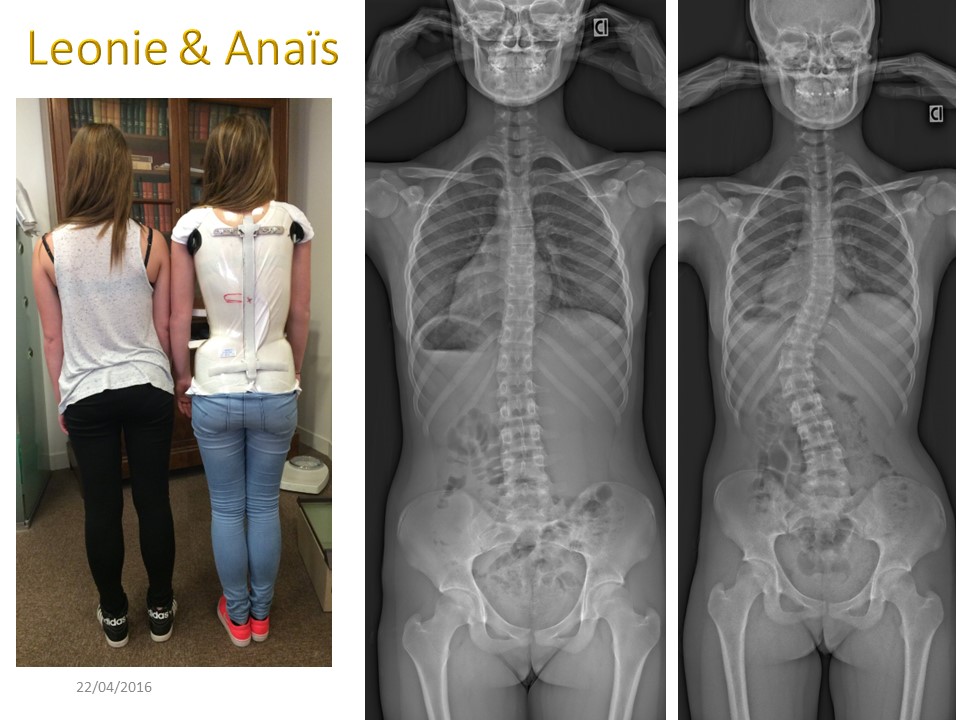 |
Léonie and Anais are also two monozygotic twins. One has thoracolumbar scoliosis justifying the wearing of a brace, the other has no significant deviation. I often use this example to explain that we must be more attentive, but that evolution is not inexorable. |
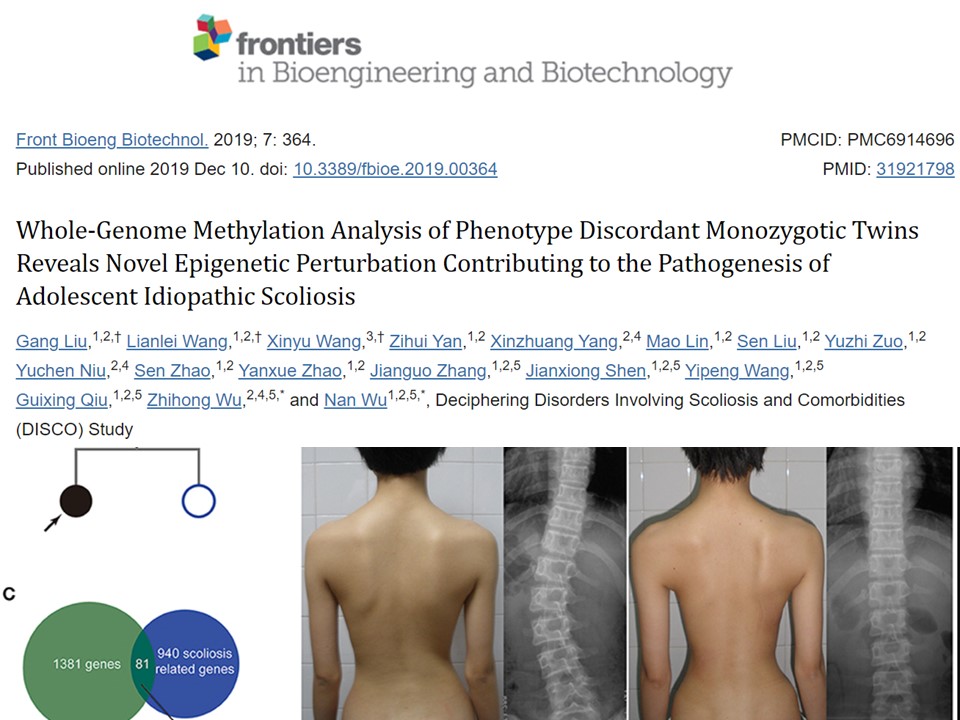 |
There are significant differences in the epigenetic study of monozygous twins. |
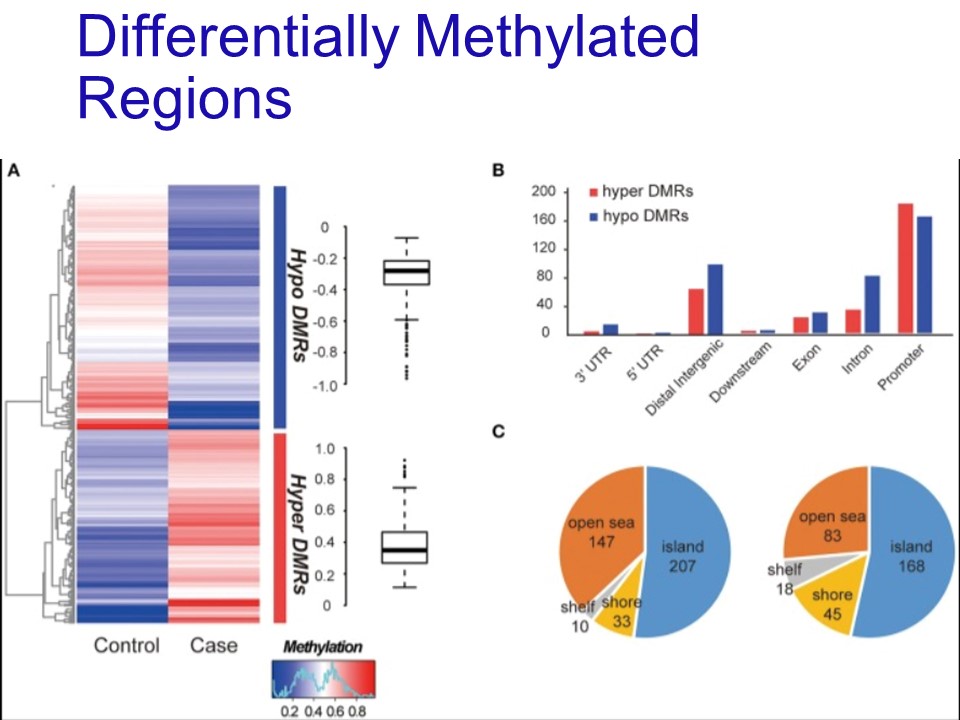 |
Differentially methylated regions (DMRs) are genomic regions with different methylation statuses among multiple samples (tissues, cells, individuals, etc.), and are regarded as possible functional regions involved in gene transcriptional regulation. The epigenetic development of monozygous twins shows significant differences in differentially methylated regions. |
 |
These epigenetic modifications occur from the embryological development of the child, although the cellular genetic capital remains identical..
|
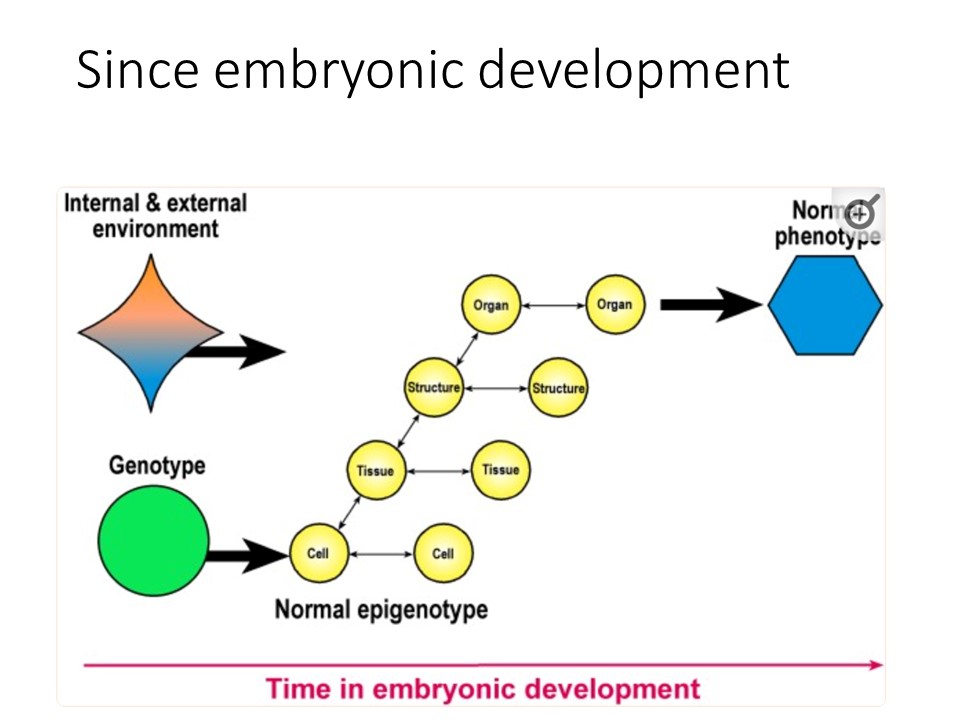 |
The epigenetic environment is then partly determined by that of the mother, but each of the two twins will gradually acquire its epigenetic autonomy. |
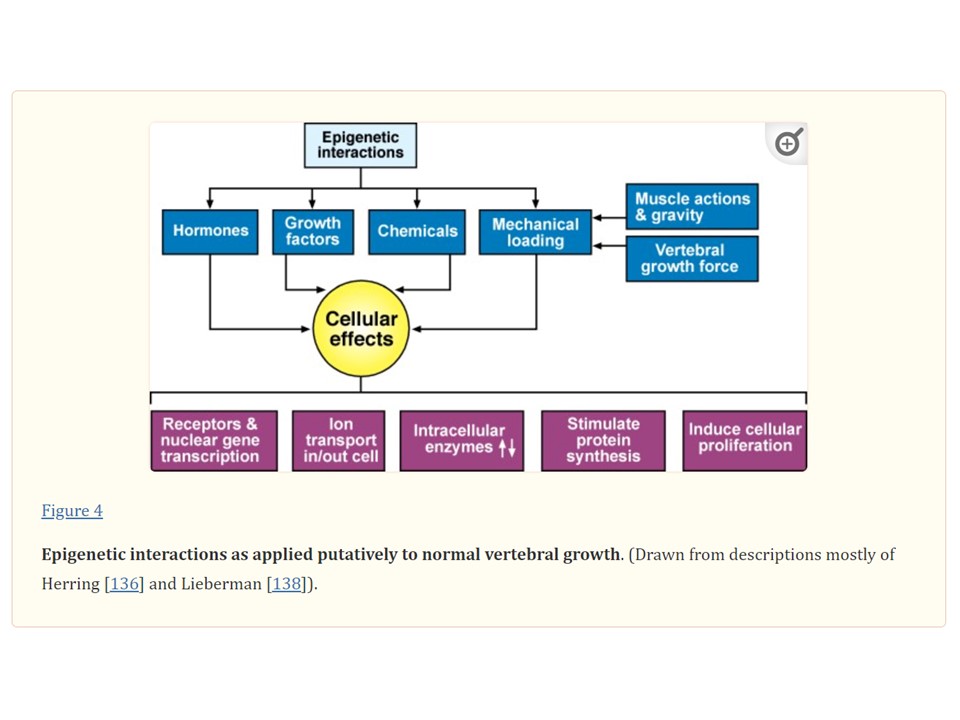 |
Epigenetic interactions will increase during growth and integrate the biomechanical environment related to gravity and bipedalism. MiR-145 microRNA is overexpressed in primary osteoblasts from patients with AIS. miR-145 could potentially be used as a specific biomarker of AIS progression. The exercise specifically adapted to the biomechanics of scoliosis will have a positive epigenetic effect and allow a regression of scoliosis. |
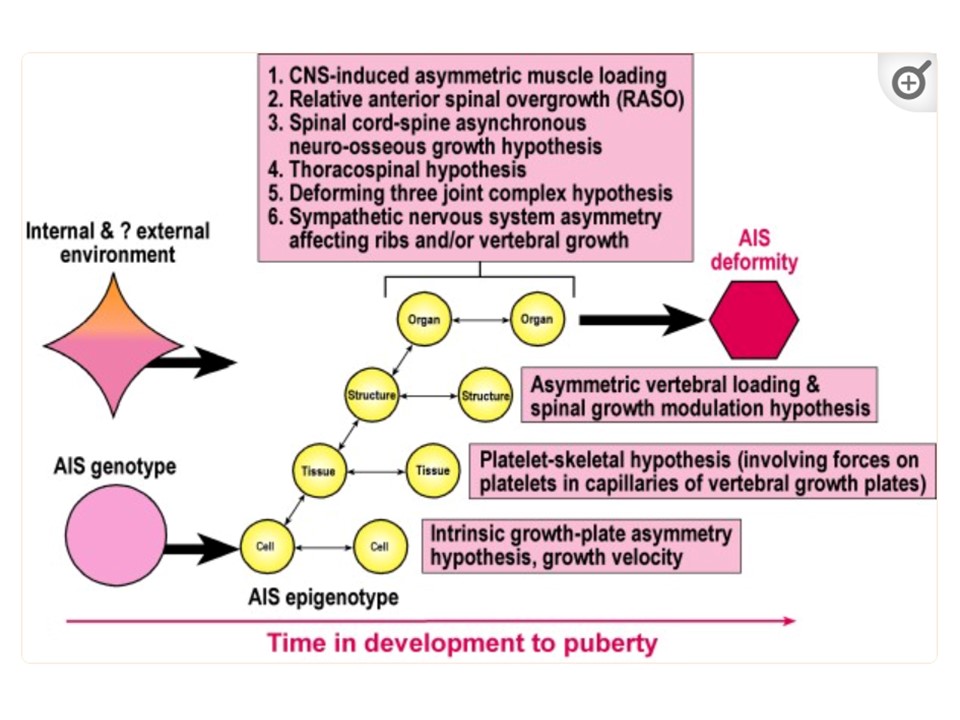 |
The pubertal period specific to homo sapiens concentrates all the epigenetic phenomena from the cell to the organ explaining the frequency of adolescent scoliosis. |
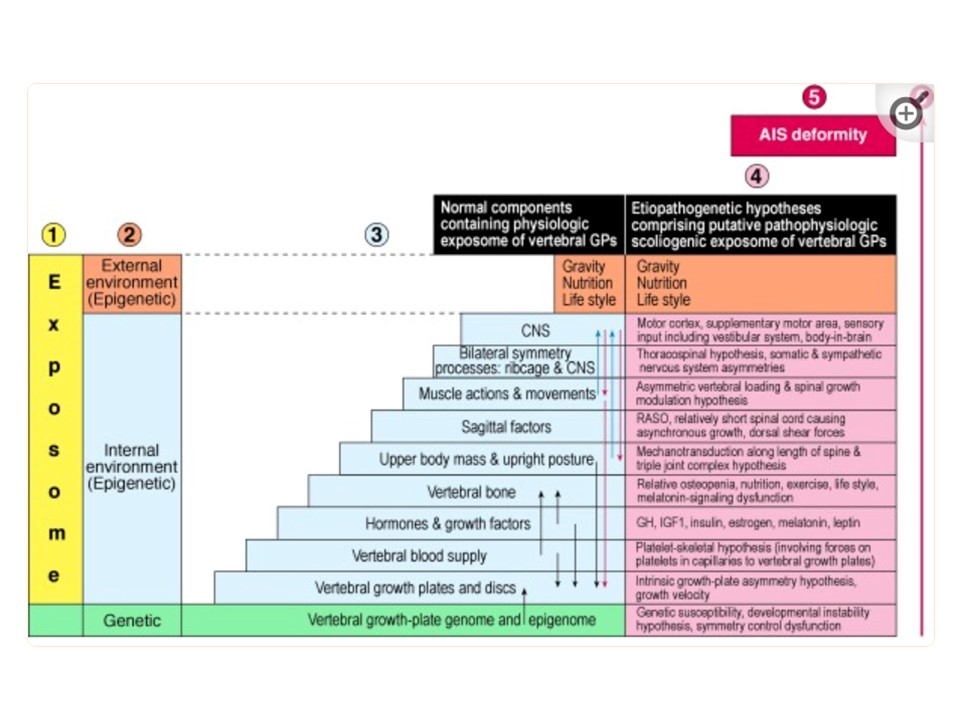 |
At this time the role of genetics is minimal and less than that of the external environment (gravity, nutrition and lifestyle). The internal environment including biomechanics, hormonal growth, and especially the extra-pyramidal postural system becomes predominant. The Lyon method responds to all epigenetic factors.
|
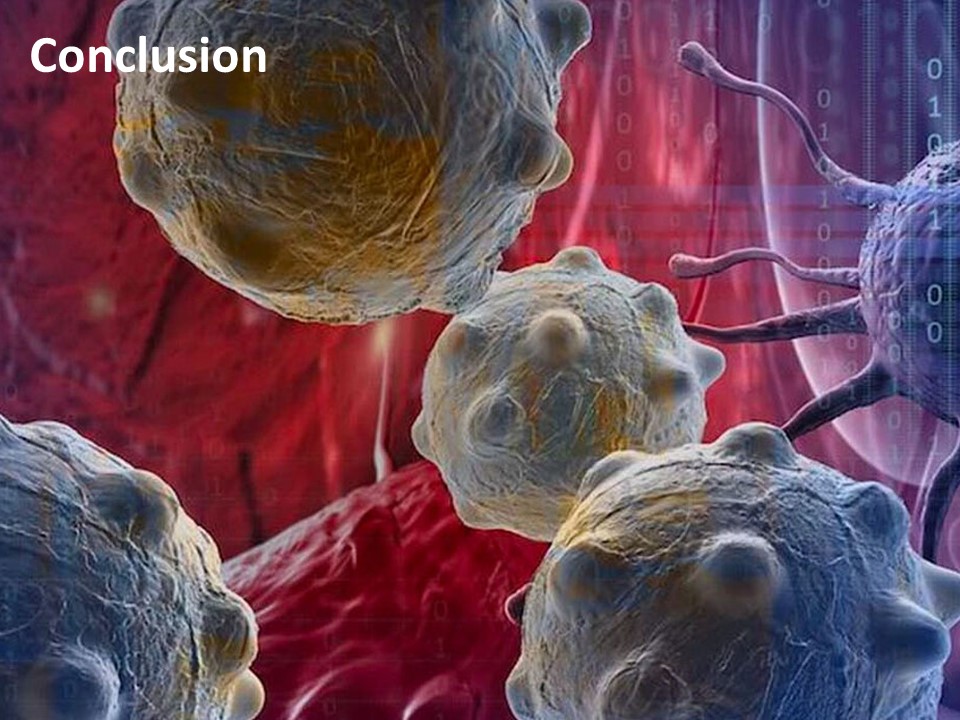 |
We now explain how exercise and lifestyle directly influence the development of our genes. Epigenetics tells us that by making the right choices, we can influence our genetic predispositions. By introducing positive stimulation, such as eating well, exercising, avoiding stress and getting enough sleep, positive changes are created. We are partly masters of our destiny. |
 |
The epigenetic landscape with cellular destiny (Waddington 1957)
|
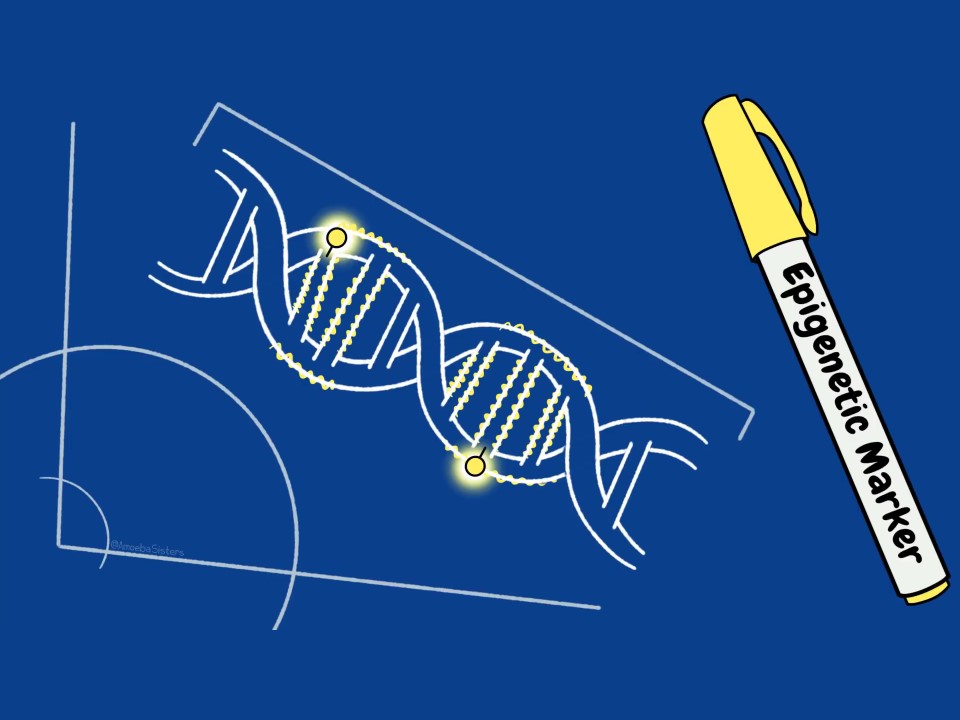 |
|
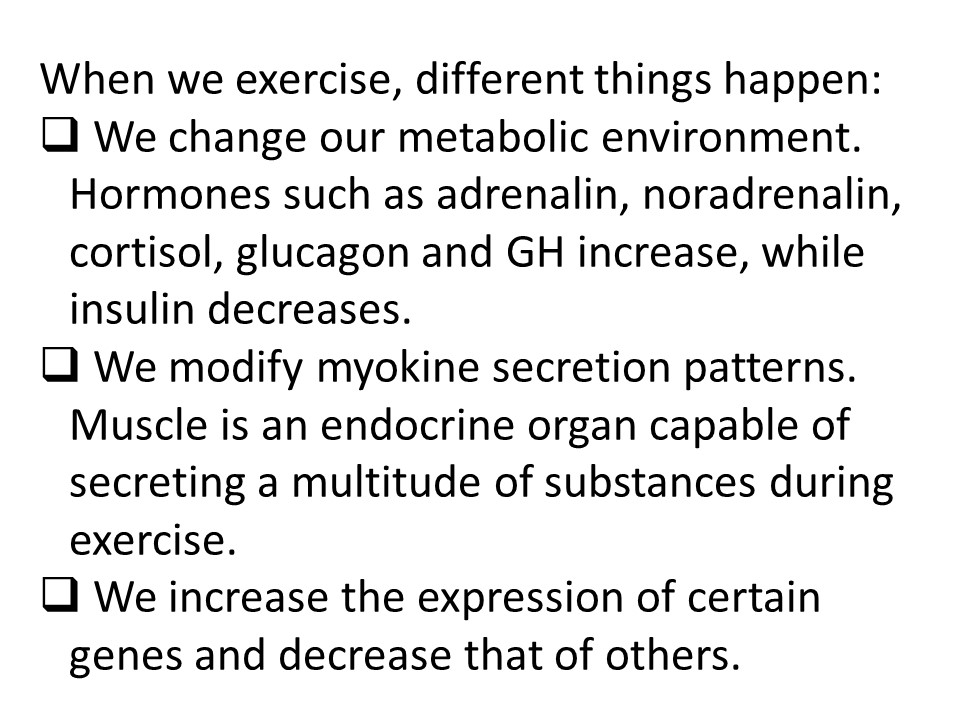 |
|
 |
|
 |
|
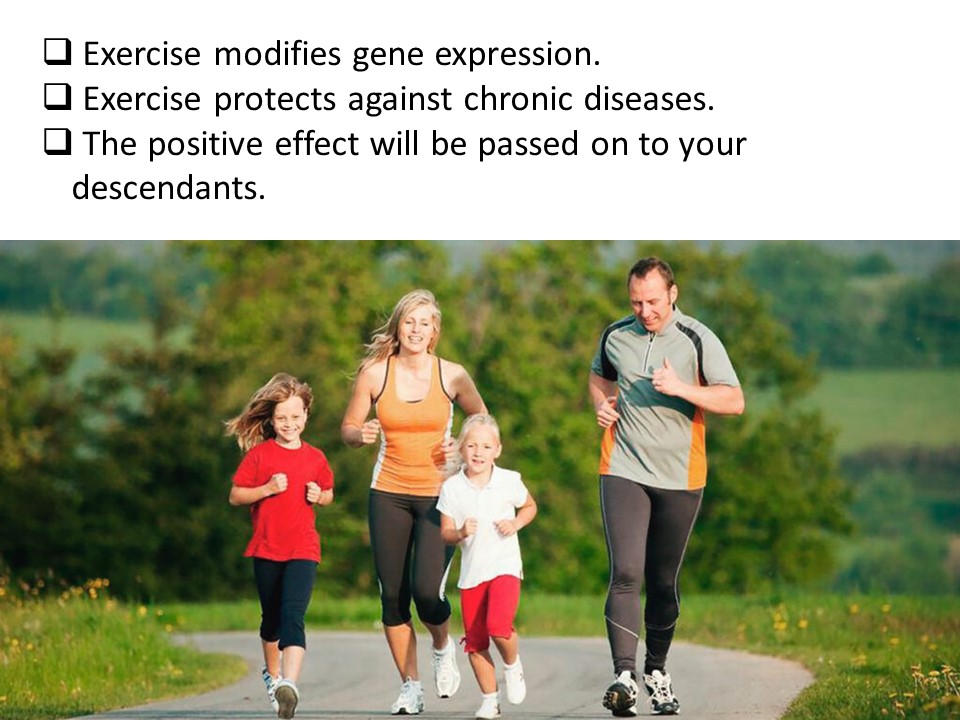 |
|
Free powerpoint